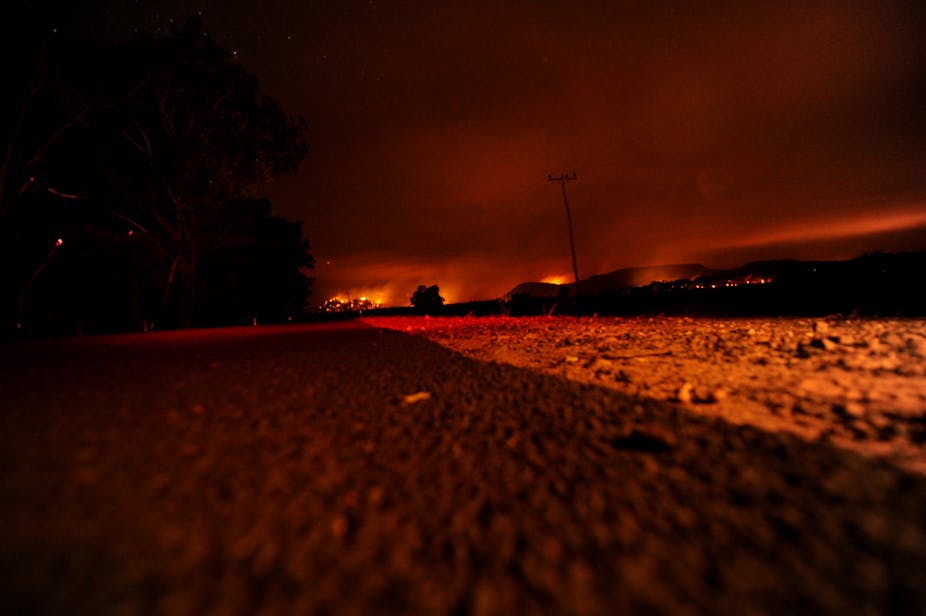The intensity and frequency of bush fires and firestorms around the globe, including recently in Australia, is a growing worry. Under conditions where mean land temperatures have increased by ~1.5 degrees Celsius since 1750, the effects of fires under higher temperatures projected by the IPCC for later this century defy contemplation.
While there is scepticism from those who do not accept the scientific method nor empirical evidence, the laws of physics tell us atmospheric temperatures are largely regulated by greenhouse gases (GHG). The same applies to the connection between rising temperature and the spate of extreme weather events around the world. This includes increased climate variability, heat waves, fires, cold fronts, intensification of the hydrological cycle and consequent rise in floods and hurricanes experienced in Australia over the last few years and at present.
The failure to negotiate agreements for mitigation of GHG, through Kyoto, Copenhagen, Cancun, Durban and Doha now poses an existential risk around the world and in Australia.
Where does responsibility belong?
Since 1990 the UN International Panel on Climate Change (IPCC) has issued detailed peer reviewed science-based climate change reports. They document past and current climate parameters and project trends to the end of the century. However, the gradual and linear nature of these trends has lulled the public into false sense of security. Many of us assume sufficient time remains to stabilise the climate by gradually mitigating carbon emissions.
Further, IPCC reports tended to underestimate climate change rates. They provide limited information about the stability of ice sheets, the magnitude of amplifying feedback effects and methane release.
As UN climate efforts depend entirely on decisions by its members, the first port of call has to be with governments. Elected or otherwise, they ought to be committed to protect people’s lives, present and future.
In this regard, James Hansen, NASA’s chief climate scientist states:
Ladies and gentlemen, your governments are lying through their teeth. You may wish to use softer language, but the truth is that they know that their planned approach will not come anywhere near achieving the intended global objectives. Moreover, they are now taking actions that, if we do not stop them, will lock in guaranteed failure … The problem is that our governments, under the heavy thumb of special interests, are … pursuing policies to get every last drop of fossil fuel.__“
Until recently few government officials dared to link extreme weather events with climate change, using terms such as "one in a hundred years event” for floods and fires occurring at increasing frequency. Governments continue to encourage fossils fuel production and some have even abolished climate change programs and reduced fire rescue services.
The next ports of call are the large fossil fuel corporations. They are known to donate funds to think tanks biased toward rejection of climate change observations - even though those observations are made by the bulk of peer-reviewed scientists, research organisations (NASA, NOAA, NSIDC, Hadley-Met, Tyndall, Potsdam, CSIRO, BOM), the World Meteorological Organisation and the world’s academies of science.
Major responsibility lies with large sectors of the corporate media which compromise or cover-up the climate evidence which climate scientists attempt to communicate. Much of the media would not acknowledge the connection of extreme weather events with climate change.
However, neither governments nor vested interests would have been able to continue on the track leading toward a climate calamity had it not been for the majority who, aware of the risks, pay only lip service to the issue. Ultimately it is the collective foresight or lack of such, by our species which it will decide its future.
Where to now?
Some scientists despair. Professor Guy McPherson writes “It seems no matter how dire the situation becomes, it only gets worse when I check the latest reports”. Others accept Pablo Casals’ dictum “The situation is hopeless. We must take the next step”.
In themselves, efforts at reducing atmospheric CO2-emission are no longer sufficient to prevent further global warming. Along with sharply reducing carbon emissions, we need to undertake efforts to reduce atmospheric CO2 from the current level of near-400 ppm to well below 350 ppm. A wide range of technologies - many known as “geo-engineering” - have been proposed to do this job.
The concept of “geo-engineering” rings alarm bells for some, but it has been confused. Most people understand this concept in terms of solar injection of sulphur dioxide into the stratosphere. This is a Band-Aid at best; at worst it is a harmful measure causing further ocean acidification and the retardation of precipitation and of the monsoon.
By contrast, CO2 draw-down is a far-better option. It would attempt to reverse the deleterious consequences of the over 560 billion tons of carbon released from combustion and land clearing. Other measures such as NASA-applied outer space shade technology may buy time for such planetary defence effort.
The alternative does not bear contemplation.

